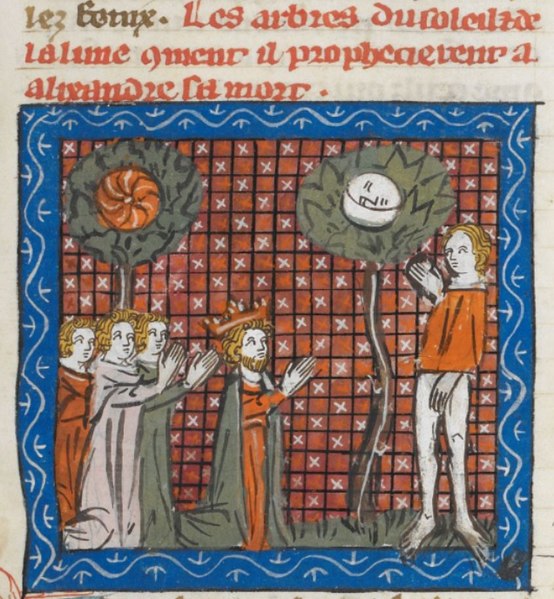In J. R. R. Tolkien's legendarium, the Two Trees of Valinor are Telperion and Laurelin, the Silver Tree and the Gold Tree, which bring light to Valinor, a paradisiacal realm where angelic beings live. The Two Trees are of enormous stature, and exude dew that is a pure and magical light in liquid form. The craftsman Elf Fëanor makes the unrivalled jewels, the Silmarils, with their light. The Two Trees are destroyed by the evil beings Ungoliant and Melkor, but their last flower and fruit are made into the Moon and the Sun. Melkor, now known as Morgoth, steals the Silmarils, provoking the disastrous War of the Jewels. Descendants of Telperion survive, growing in Númenor and, after its destruction, in Gondor; in both cases the trees are symbolic of those kingdoms. For many years while Gondor has no King, the White Tree of Gondor stands dead in the citadel of Minas Tirith. When Aragorn restores the line of Kings to Gondor, he finds a sapling descended from Telperion and plants it in his citadel.

Alexander the Great and followers kneeling in prayer at the Trees of the Sun and the Moon, under the guidance of a high priest. England 1333-c. 1340
The Lia Fáil on the hill of Tara
The Theft of the Sampo by Akseli Gallen-Kallela, 1897
The Dry Tree with the Phoenix, flanked by the Trees of the Sun and the Moon. Rouen 1444-1445
Valinor or the Blessed Realm is a fictional location in J. R. R. Tolkien's legendarium, the home of the immortal Valar on the continent of Aman, far to the west of Middle-earth; he used the name Aman mainly to mean Valinor. It includes Eldamar, the land of the Elves, who as immortals are permitted to live in Valinor.
Earthly Paradise: Eldamar has been compared to the place dreamed of in the Middle English poem Pearl. Miniature from Cotton Nero A.x shows the Dreamer on the other side of the stream from the Pearl-maiden.
The strife among the Elves and their resulting exit from Valinor has been compared to the Biblical fall of man. The serpent tempts Adam and Eve to eat the forbidden fruit, Notre Dame de Paris
Scholars have compared Tolkien's Valinor to the "Land of Promise" in Celtic imrama tales. Here, Saint Brendan sails the seas looking for the Land of Promise. Gautier de Metz, c. 1304







